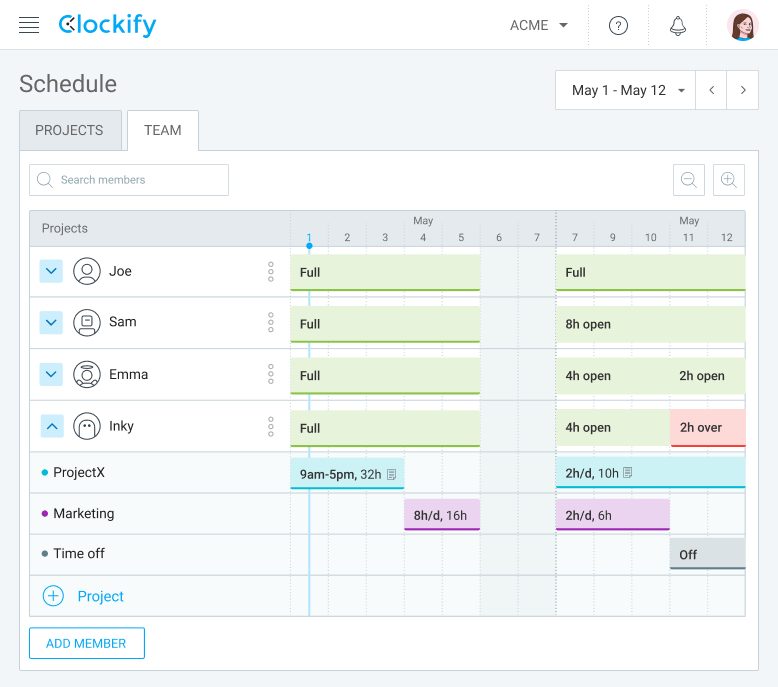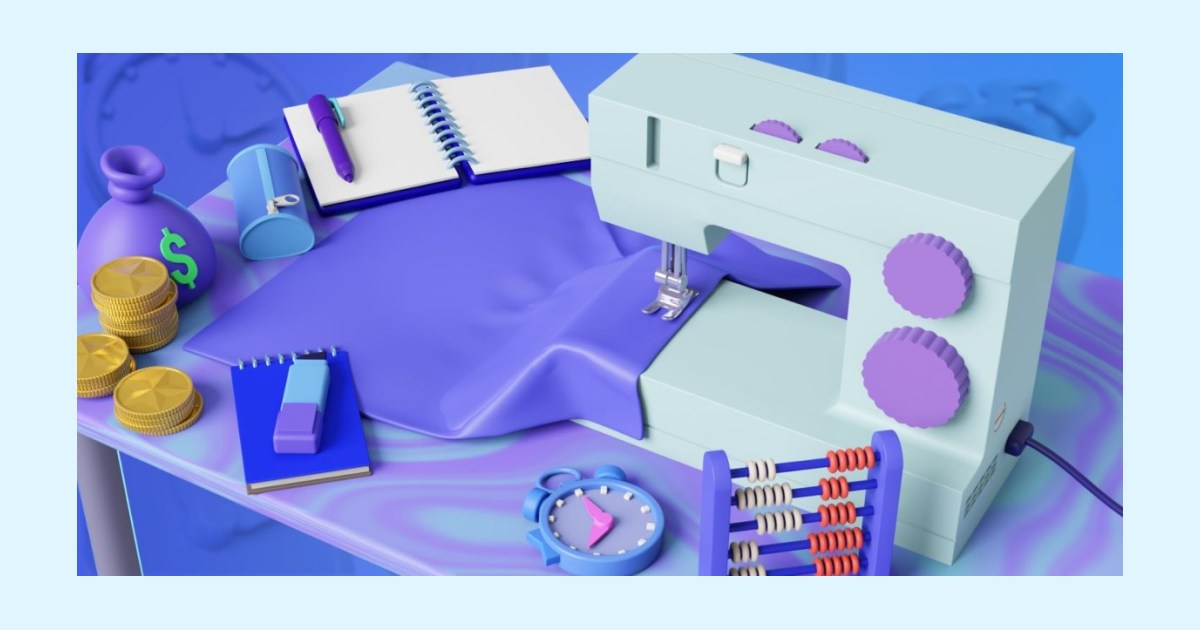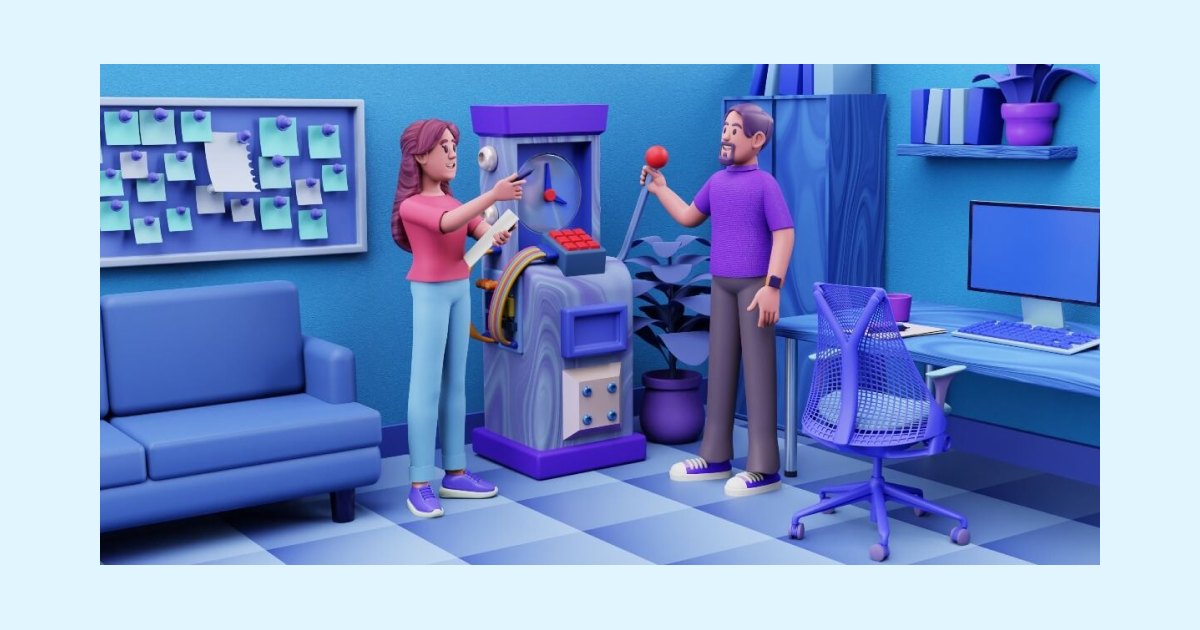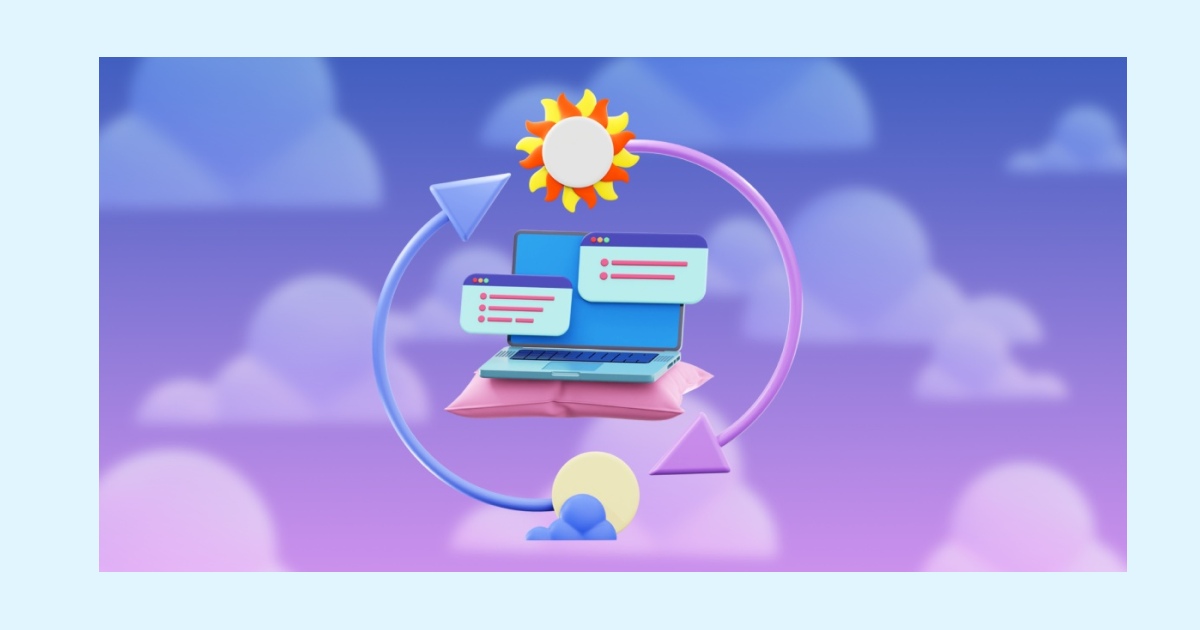What is the 2-2-3 work schedule and why is it useful?
Last updated on: January 6, 2023
Around the world, the working environment has changed dramatically. To retain employees and gain more customers, companies have adjusted to the modern world of work — so, besides the traditional 9-to-5 environment, new types such as flexible, hybrid, and shift work have emerged.
As soon as an increasing number of companies have started prioritizing their customers’ needs and employee satisfaction, the number of workplaces that require 24/7 coverage has risen too. As a result, shift work has emerged, so managers and employees need to adapt and adjust.
Oftentimes, finding the best shift schedule can be challenging. But, to prevent you from wandering around searching for the best fit for your company, in this blog post we’ll uncover everything there is to know about one of the most effective shift patterns out there — the 2-2-3 work schedule.
Read on to find out:
- What is the 2-2-3 schedule and how it works,
- Who uses the 2-2-3 shift pattern,
- What are the 2-2-3 work schedule’s pros and cons,
- What are the alternatives to the 2-2-3 schedule, and
- How to implement the 2-2-3 work pattern.

Table of Contents
What is the 2-2-3 schedule and how does it work?
The 2-2-3 plan, also known as the Panama schedule, involves a rotational cycle of 28 days where each employee performs a daily 12-hour shift. This plan often involves four teams working for two days, taking two days off, and then working for three days. That is why it is called the 2-2-3 work schedule.
Here is a 2-2-3 work schedule example:

As seen in the illustration above, while Team 1 works on Monday and Tuesday (Week 1) from 7 a.m. to 7 p.m., Team 2 works from 7 p.m. to 7 a.m.
Then, Teams 1 & 2 have two days off, while Teams 3 & 4 take over the shifts.
After that, Teams 1 & 2 return to work for three days — Team 1 works the day shift while Team 2 works the night shift. And, Teams 3 & 4 have three days off.
Who uses the 2-2-3 shift pattern?
As previously mentioned, shift work is necessary for industries with varied and extended business hours. It’s especially common in those industries which require employees to be present 24/7 to assist everyone as is the case in:
- Health care,
- Police stations,
- Fire services,
- Manufacturing industries,
- Petrol stations,
- Transportation and airlines,
- Customer service call centers, and
- Media and newspapers.
It would be impossible for a single employee to cover every shift around the clock in these industries, and that is why teams frequently operate on a 2-2-3 work schedule. However, since there are four teams with rotating shifts involved, it’s usually challenging to organize them.
Consequently, many industries rely on project scheduling software, which helps teams track their time, thus making them more organized and productive.
Advantages of the 2-2-3 work schedule
There are a lot of advantages that come with the 2-2-3 shift plan, and we’ll explore some of them in the following lines.
Since this type of shift pattern comes with a wide range of benefits that both employees and business owners can reap, we’ve listed the four most common advantages you’ll definitely spot if you decide to introduce this type of work schedule.
Advantage #1: Increased customer pool
Depending on the industry, staying open 24 hours a day may allow you to reach more people. This can eventually lead to more customers and higher earnings.
Let’s say you own a restaurant and you are open from 10 a.m. to 11 p.m. If you decide to introduce the 2-2-3 schedule and work 24/7, your restaurant will be able to attract more customers and have more profit.
And, since you are always available to your customers, you build trust and good relationships with them.
Advantage #2: Increased productivity and lower hiring costs
Long shifts allow employees to focus on a specific project for longer periods, enabling them to complete the task before their shift ends.
When employees work 12-hour shifts, it is possible to hire fewer people, which allows you to redirect funds to other areas of your business.
💡 Clockify Pro Tip
If you want to increase your employees’ productivity, read our blog to find out about 8 fast ways to increase employee productivity in the workplace.
Advantage #3: More leisure time
When using the 2-2-3 work pattern, every other week employees only work for two days. Thus, they’ll be able to spend the rest of their week as they like.
If traveling is their way to relax and spend their free time, working on a 2-2-3 schedule gives them plenty of opportunities for planning weekend getaways. Also, this shift pattern enables employees to work only 180 days a year, which makes their lives more relaxing.
Advantage #4: Better work-life balance
The 2-2-3 schedule helps in achieving a good work-life balance, which makes it perfect for employees with children and families.
The 2-2-3 work plan enables employees to have 2 or 3 consecutive days off, which allows them to have more quality time with their children and families, or take a short trip and visit that place they have always wanted to.
When they return to work, they will be more productive and the quality of their output will be higher, since they are more energized and well-rested.
Disadvantages of the 2-2-3 work schedule
Just like everything else in life, the 2-2-3 work schedule has its drawbacks. Besides the pros, there are many cons to this type of schedule, and we’ve listed the two most common ones.
Disadvantage #1: Health problems
When employees work 12-hour shifts they are putting their health at risk, since these shifts could be too long for some individuals. Furthermore, working up to 60 hours in a single week can:
- Increase stress levels,
- Cause poor eating habits,
- Negatively affect the immune system, and
- Lead to career burnout.
💡 Clockify Pro Tip
If you want to know what career burnout is and how it can affect your health, read our blog post on the subject:
Disadvantage #2: The sleeping cycle disruption
Working long hours can significantly affect employees’ sleeping patterns, which can then lead to more health problems and higher stress levels. Consequently, employees may struggle to stay alert, especially if they work the night shift, and this can result in serious accidents.
Furthermore, research has shown that there’s a strong link between night shift work and the development of cardiovascular disorders. Night shift employees are also more likely to engage in unhealthy activities like smoking or overeating.
Variations of the 2-2-3 work schedule
Apart from 2-2-3 work pattern, there are other similar work schedules.
Among the most famous ones are:
- The Pitman schedule,
- The DuPont schedule, and
- The DDNNOO schedule.
All of these variations are similar to the 2-2-3 work plan, but adapted in different ways.
Variation #1: The Pitman schedule
Unlike the 2-2-3 schedule, the Pitman shift schedule involves employees working in a 2-3-2 pattern.
It is known as the 2-3-2 work schedule because workers have two days off, work three days, and then have two more days off.
There are two versions of the Pitman schedule:
- Version #1: Fixed Pitman schedule — the first team will always work during the day and the second team will work at night.
- Version #2: Rotating Pitman schedule — teams rotate so that during one cycle one team works the day shift, and during the next cycle the same team works at night.
Variation #2: The DuPont schedule
Another work pattern is the DuPont schedule, which involves a four-week cycle and consists of four stages:
- Stage #1: Work four night shifts, and then take three days off.
- Stage #2: Work three day shifts, have one day off, followed by three night shifts.
- Stage #3: Have three days off, then work four-day shifts.
- Stage #4: Have seven days off.
Variation #3: The DDNNOO schedule
Unlike the 2-2-3 schedule where four teams operate, in the DDNNOO work schedule, three teams alternate between:
- Working two days,
- Working two nights, and
- Taking two days off.
In this six-day cycle, each team works two 12-hour day shifts and two 12-hour night shifts. For instance, on the first and second days, Team 1 has daily shifts. Then, on the third and fourth days, Team 1 works during the night.
How to implement the 2-2-3 work schedule?
Despite being one of the most practical flexible schedules, you may face challenges managing your team while using the 2-2-3 pattern.
As we’ve seen from the section about disadvantages, if not applied correctly, following the Panama schedule can negatively impact employees’ sleeping cycles and immune systems, and increase their stress levels.
Therefore, to help you avoid the shortcomings of this type of schedule, we’ve put together a few practical tips on how to implement the 2-2-3 schedule successfully.
Tip #1: Define a suitable start time for your employees
The start time of the shifts is very important to your employees, as they will be more productive if you choose the most suitable time for them.
So, when should the shift start?
If your team prefers getting up early in the morning, you can start the shifts then. But, if they don’t like early shifts you could start later in the day. In general, you should communicate with your employees and see when they feel most productive, and what would be the most suitable start time for them.
Also, start times sometimes depend on the type of work that your team performs. So it won’t be possible to adjust the schedule for every employee — however, the manager can allow the employees to switch shifts with their colleagues to get the flexibility they need.
Tip #2: Promote and ensure enough breaks in the shift plan
When working 12-hour shifts, employees need regular breaks to be productive and efficient. After all, it’s not uncommon for stressed employees to have a hard time delivering quality work.
To avoid your employees overworking themselves, try recommending they take short, but frequent breaks, go for a walk or take a nap. Not taking enough breaks can lead to increased stress levels, anxiety, and depression. Taking breaks is good for employees and companies as well. After a break, employees will feel energized, and companies will benefit from their productivity.
There are a lot of time management techniques that promote taking short breaks and promise to increase productivity and efficiency, such as the Pomodoro technique. The Pomodoro technique is a time management technique that uses a timer to break the working process into 25-minute work sessions with short breaks of 5 minutes between them.
Tip #3: Automate shift scheduling
Manually creating a schedule for a large group of employees is a difficult job.
Due to its complexity, it is a time-consuming process that often leads to issues with employee productivity, efficiency, and well-being.
Still, this can be avoided by using an employee scheduling software such as Clockify, which can help you plan your shifts and alert team members so they can be prepared.
With this feature, you’ll have a better overview of your team and you’ll be able to better manage the workload, by observing:
- Who is available to take over more tasks, and
- Who is already overbooked.

When you decide to automate this process instead of manually crafting a schedule from scratch, you’ll find it much easier to handle shift swaps and find a cover when an employee is ill.
Moreover, you can easily make schedules public and avoid the potential confusion that might arise after introducing a new work schedule.
Tip #4: Help new workers adapt
Starting a new job can be hard for employees because it requires adjusting to the work environment of the new company. But, adding the 2-2-3 work schedule into the combination can make it even more difficult. This schedule can be a problem, especially for those employees who haven’t done shift work before. Because of that, it is important for managers to help new employees, in the beginning, to get used to the 2-2-3 work schedule.
They should be in touch with the new employees and communicate with them regularly. Managers should check whether they can do something to ease this period of transition and adaptation. Doing shift work can make it difficult for employees to maintain their social life and hobbies, so it’s up to managers to ensure that employees are achieving a good work-life balance.
Studies show that your new employees may suffer from exhaustion, insomnia, and other issues because of rotating schedules. Therefore, it is important to check for any signs of tiredness.
You can help them adjust to the workload and irregular shift schedules by presenting them with written instructions and assignments they need to complete through schedule templates. During the new employees’ adjusting period, you can assign a more experienced colleague to help them.
Tip #5: Have adequate lighting
Lighting at the workplace can affect your employees’ productivity in many ways. Too little light can cause sleepiness, while too much light can cause eye problems and headaches. So, we need to find the perfect balance, especially for night shifts.
According to the study carried out by the University of Bergen, the right combination of high light levels and cold white light can boost employees’ focus and minimize drowsiness.
When it gets dark in the evening our body releases melatonin, which prepares us for sleep. Since the 2-2-3 work schedule involves work in night shifts, it is important for the workplace to be well-lit. A well-lit workplace helps your staff remain alert, focused, and psychologically prepared to do their best.
Thus, employees will be more productive, especially during the night.
Tip #6: Recommend less caffeine intake and set up a napping area
Working for 12 hours straight can be difficult and tiring and most workers will rely on drinking a lot of coffee. According to the study on caffeine effects on sleep, drinking coffee 6 hours before going to bed can disrupt sleep-wake cycle.
As a manager, you should set up a “napping area”, since workplace napping is becoming increasingly popular. Many famous companies such as Nike, Google, Facebook, and Ben and Jerry’s have created rooms for naps. A 15–20 minutes power nap can greatly increase employees’ efficiency and productivity, especially during the night shifts.
Conclusion: Ensure 24/7 coverage and improve team productivity with the 2-2-3 work schedule
With different work environments comes diverse work scheduling. Among many variations of shift work, the 2-2-3 or Panama work schedule has emerged as one of the most effective ones, especially if you want to ensure 24/7 coverage to meet your clients’ demands.
Its popularity is based on vast benefits for business owners as well as their employees, which include better productivity, work-life balance, and more free time. In this blog post, we presented some practical tips on how to implement the 2-2-3 work schedule in the best possible way, so we hope you’ll find them useful.
✉️ Have you already tried the 2-2-3 work schedule? Do you have any tips on how to implement the 2-2-3 work schedule and increase employees’ productivity? Tell us at blogfeedback@clockify.me and you’ll get a chance to be featured in one of our future articles. Also, if you enjoyed this blog post, share it with someone you think would find it interesting.





